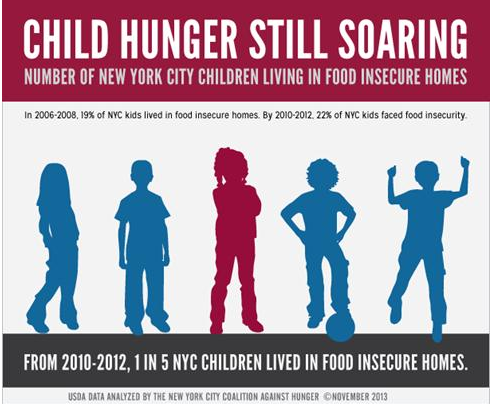One in eight Brooklyn residents are food insecure

Despite record stock market highs, one in six New York City residents still face food insecurity and hunger, and one in seven Brooklyn children in are food insecure. In addition, 12 percent – one in eight – of Brooklyn residents lived in food insecure households in 2010-2012. The new report – “Superstorm of Hunger: Lingering Shortfalls Expose a Tale of Two Food Cities” – demonstrates how the economic downturn, coupled with Superstorm Sandy, merely exposed and exacerbated the city’s already extensive poverty and hunger. The NYC Coalition Against Hunger unveiled Brooklyn specific findings today at Bed Stuy Campaign Against Hunger.
In the 2010-2012 time period – between 1.3 and 1.4 million New York City residents – including one in five of the city’s children – lived in households that lacked sufficient food. Food insecurity increased by a minimum of 200,000 since the 2006-2008 time frame. These hunger statistics do not yet reflect the impact of the recent large-scale cuts in SNAP (food stamps).
In Brooklyn, 50 percent of feeding agencies reported not having enough food to meet current demand while nearly 92 percent of responding agencies reported an increase in the number of people they served over the past year.

Brooklyn Boro
View MoreNew York City’s most populous borough, Brooklyn, is home to nearly 2.6 million residents. If Brooklyn were an independent city it would be the fourth largest city in the United States. While Brooklyn has become the epitome of ‘cool and hip’ in recent years, for those that were born here, raised families here and improved communities over the years, Brooklyn has never been ‘uncool’.